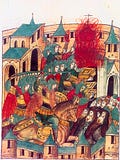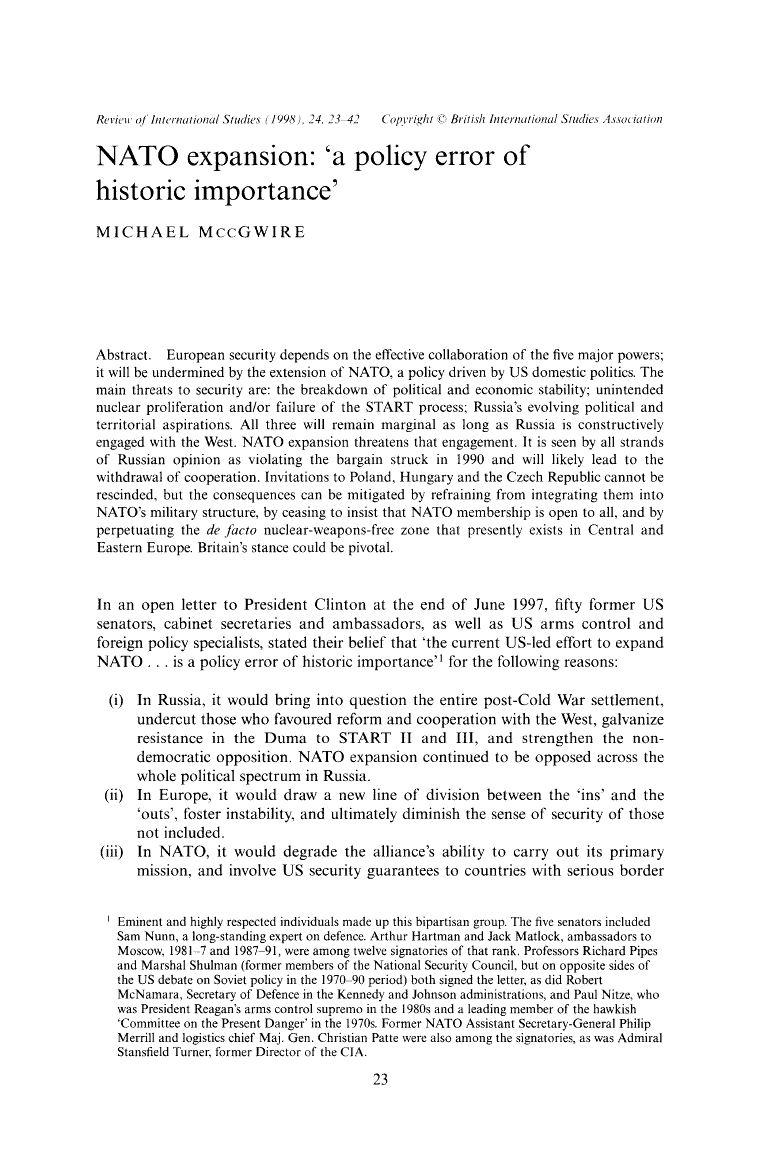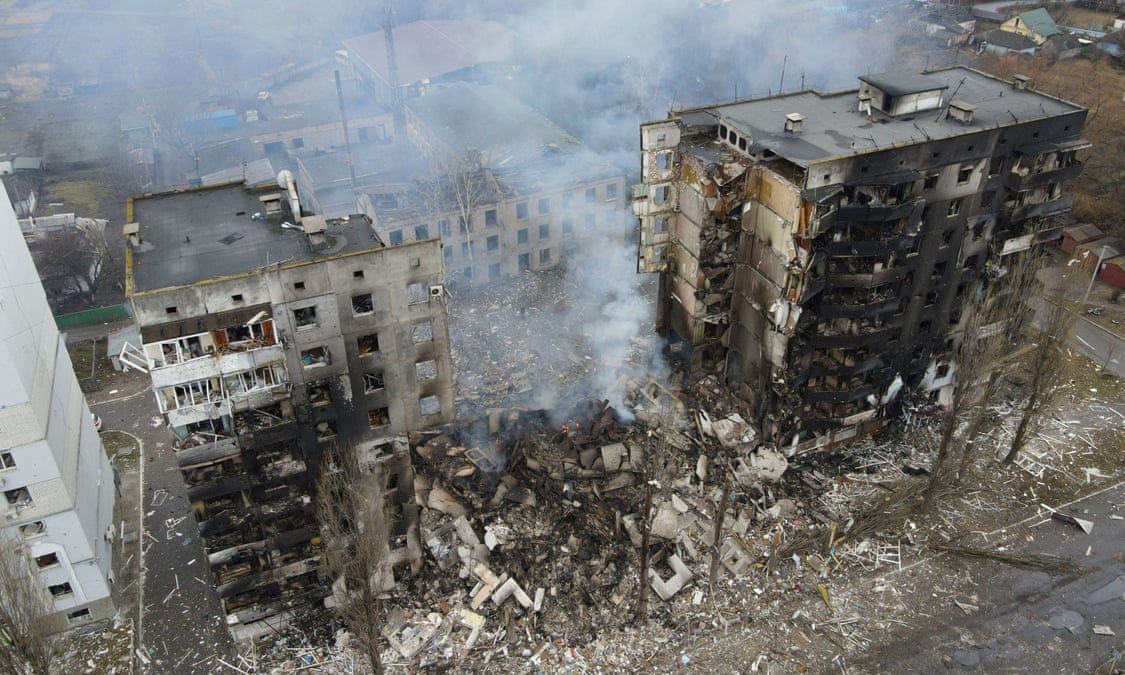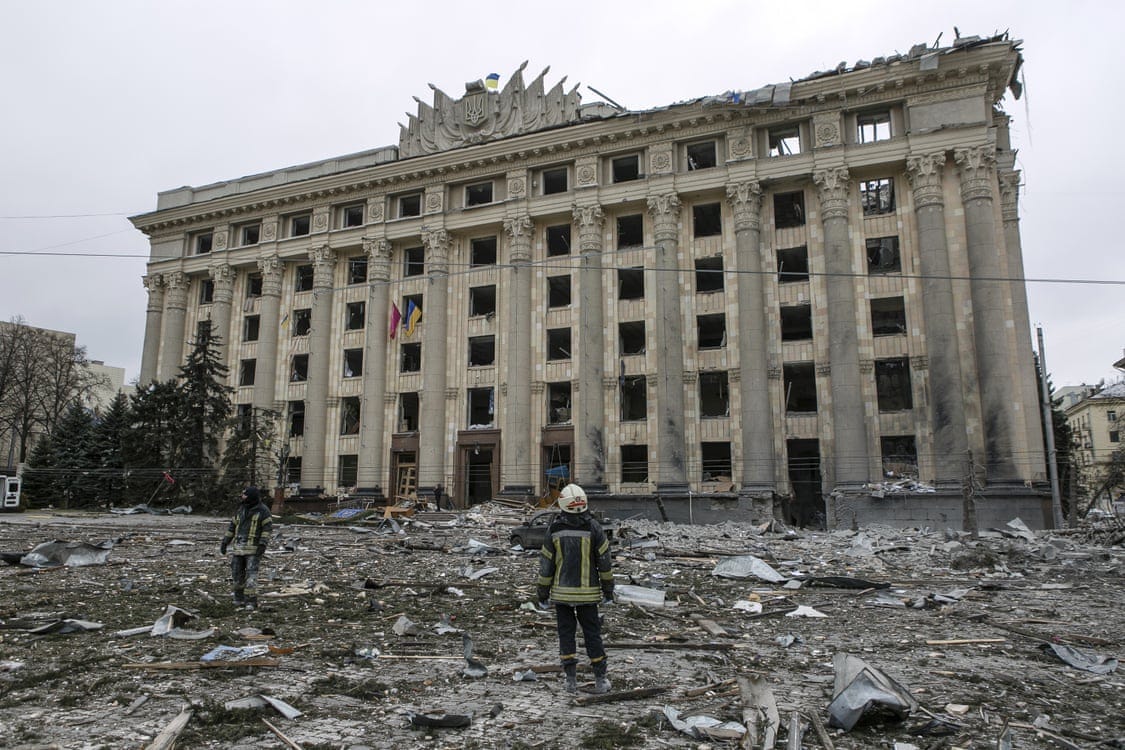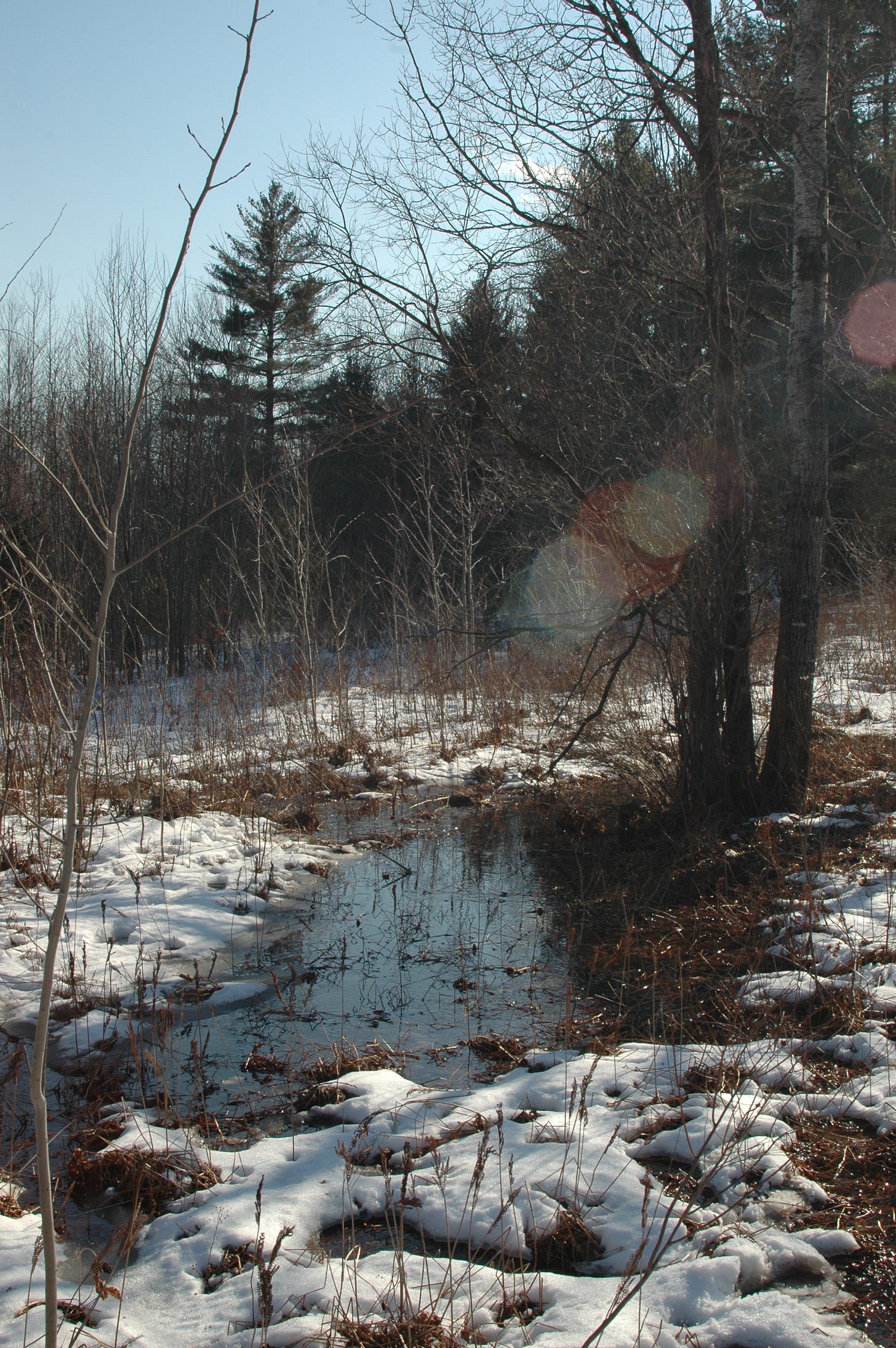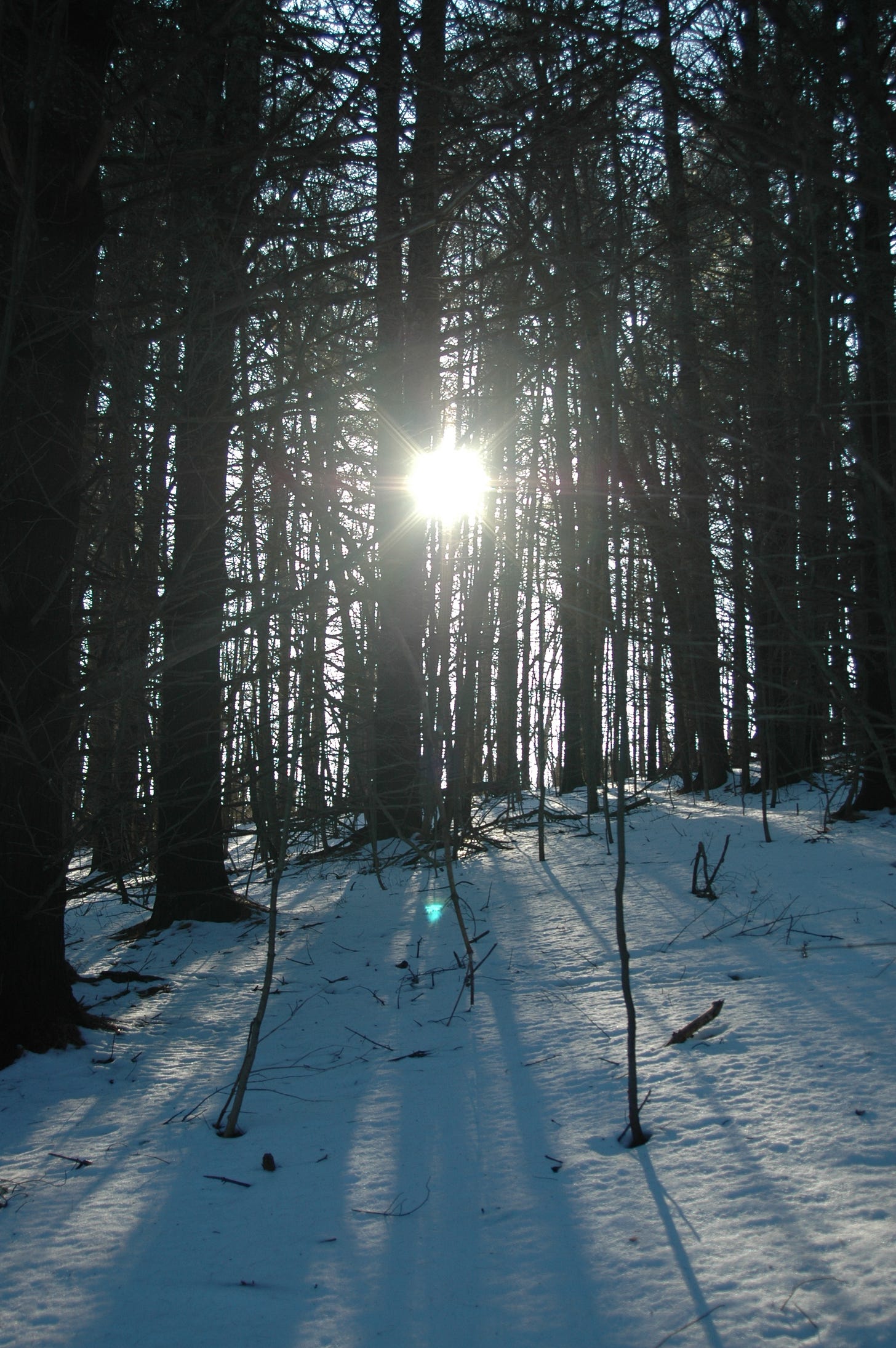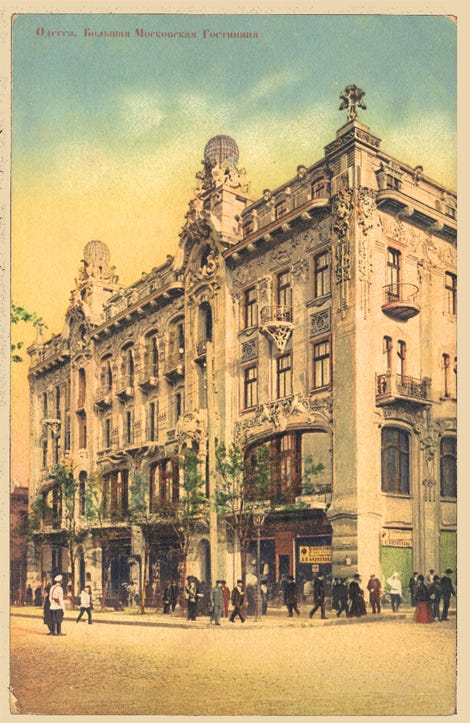From these unfolding vistas of human misery and from personal misery, man must forge convictions, call other men his brothers, and fight for freedom. Man is only free if he is prepared to kill every hangman and every power magnate if they do not wish to stop their shameful tasks. He is only free if he does not put a prime on changing his government… He must vouch for the establishment of a truly free society based on personal responsibility, the only really free society.
— Nestor Makhno (1888-1934)
What Is Happening in Ukraine?
It has been difficult trying to follow what is happening in Ukraine. Here in the United States, the war both feels distant, and in a way, inappropriate to be following closely; and also extremely intense, a kind of global portent.
Here is my impression: up until just before the war began, the intentions of the United States seemed unclear, but disingenuous; it appeared the United States might be attempting to goad Russia into a fight. The “intelligence” offered by the government looked flimsy in substance and sounded ridiculous in delivery.

Moreover, the United States—in a history that is now being denied, or deemed irrelevant—has taken a careless, aggressive, and generally short-sighted approach to Russia over the last several decades. This includes the shock doctrine-style capitalism encouraged in Russia in the 1990s; the eastward expansion of NATO beginning in the same period; and the particular American approach to Ukraine, which included involvement in the 2014 Maidan protests that toppled the Yanukovych government, and the provision of substantial arms to the country (while refusing both to admit it to NATO or to close the door on eventual NATO admission).
All this said, the Russian government apparently wanted the fight: the invasion that began on February 24 occurred in the most violent, substantial—until recently, unthinkable—blitzkrieg-style national invasion that US intelligence had warned of. The results have been extremely shocking (photos below from The Guardian).

The primary victims in this still-new war are, of course, the Ukrainian people, who are resisting valiantly. Hopefully the fighting can be stopped as soon as possible, in a reasonable manner, but at this moment, it does not look good.
It is also now clear that this war is quickly spreading beyond Eastern Europe. Western sanctions have, in a short period, cratered the Russian economy (primarily devastating those Russians least responsible for the war). Blowback—in the form of rising inflation and a spike in gas prices, and likely worse effects to come—is already palpable here. As these events intersect with a preexisting global economic and ecological crisis, not to mention a still-active pandemic, it is difficult to say what the future looks like, other than grim.
In other words, despite attempts to make sense of what seems jarring and illogical, this is still very, very new—we do not yet know the ultimate meaning or repercussions of these events.
WEATHER REPORT
We had another late winter snow—yesterday, mid-March—maybe 6” up here, with gusty winds. This one was unique in that almost all previous snow had since melted; two days ago the ground was muddy, thawing, water running and pooling everywhere. Now that’s all covered, but the fresh snow mostly acts as insulation: a few inches down it’s still mud, soft ground, water draining downhill.
About a week ago, when I started this section, here was my description:
It’s another warm day as I write this, temperature probably in the 60s, winds upwards of 30 mph, earth thawing and snow melting…
The “transition” (can it be called that?) from Winter to Spring continues to be dramatic, non-linear, and frequently unpredictable. In the last week and a half two days have reached above 50° and heat records for these dates have been broken throughout the Northeast. We’ve seen several inches of rain in the last weeks that have melted much of the snowpack here (at an elevation of about ~1800 ft). We’ve also seen dramatic turns in temperature—last night the temperature dropped about 40° in a matter of hours. High winds have accompanied these dramatic fluctuations, as the thawing and freezing turns the ground to jelly, then to a kind of crispy frost.
I saw something else new this Winter: patterns of “snow squalls,” which end up being more concerning than they sound. I liken them to brief, intense, (snow) downpours, where visibility is effectively reduced to zero. We’ve begun getting alerts on our phones when a line of these squalls is passing through the area, something I’d never seen previously.
In some ways this is all typical of the transition to Spring in New England and the Northeast—and in other ways, it’s not.

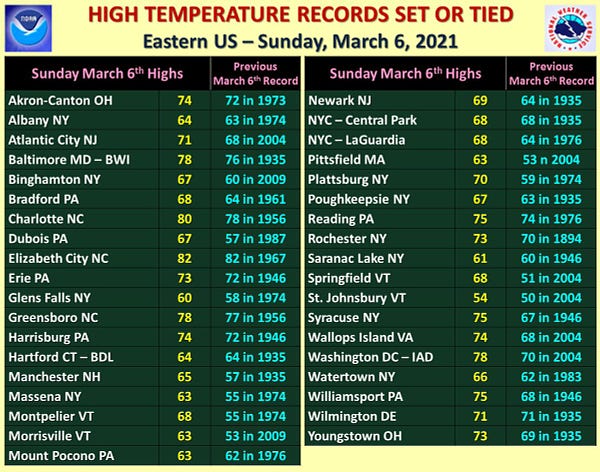
Amidst a (still ongoing) pandemic, war in Ukraine, Yemen, and elsewhere, culture war, economic crisis, and everything else, it must be said that a violently unravelling climate remains the ongoing and looming backdrop to it all…
SUNDAYS ARE FOR BAKING
Lyz is celebrating the one-year anniversary of her Sundays are for baking newsletter! SAFB is a roughly monthly newsletter that includes recipes and much more. For this special issue, she included a recipe for almond and chocolate biscotti, along with a round-up of some of the best posts from the last year. Check it out!
RECOMMENDATIONS
— Both loved and found somewhat horrifying this profile of new NYC mayor Eric Adams:
He learned that New York sits on a store of rare gems and stones, and believes that as a result, “there’s a special energy that comes from here.”
— Among the millions of pieces trying to make sense of Americans’ response to this pandemic, I found this one by Patrick Blanchfield particularly affecting:
Any idea of arresting our forward momentum, no matter the human cost, has apparently become either unthinkable or impracticable or both. That our headlong rush into a grim future of yet more death has been precipitated by people clamoring for the return to a nostalgic, fantastical past should not be surprising. Nor should we be surprised that the workers who have been described as “essential” are also apparently the most disposable. They were always essential precisely insofar as they were disposable, and the past was “normal” precisely because it depended on the ongoing foreclosure of so many human futures. This is the logic of the death drive, distilled and accelerated, to which we cling all the way to the very bitterest of ends.
— Speaking of the all-too-present death drive, a good and disturbing post from Mike Davis that was making the rounds:
We are living through the nightmare edition of ‘Great Men Make History’. Unlike the high Cold War when politburos, parliaments, presidential cabinets and general staffs to some extent countervailed megalomania at the top, there are few safety switches between today’s maximum leaders and Armageddon. Never has so much fused economic, mediatic and military power been put into so few hands.
— On a somewhat more optimistic note, Lissa Harris at The River writes about the potential for sail freight on the Hudson River—as an ecologically friendly mode of transportation.
— Also in The River, in January I wrote about an anti-vax group in the Hudson Valley, and how such groups are becoming embedded within a broader right-wing movement. For the bullet points, listen to a radio interview I did on WGXC.
— I have been thinking quite a bit about the 2018 Christian Petzold film Transit, particularly in light of the situation in Ukraine. Fantastic film, available on Kanopy:
— Finally, some music from a friend of the newsletter:
Bye.

